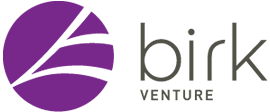Content
In this comprehensive guide, we will discuss the definition of PaaS, how it works, different types of PaaS, its advantages and disadvantages, and the differences between PaaS, IaaS, IPaaS, and SaaS. Your PaaS supplier should be available https://globalcloudteam.com/ to offer professional assistance 24/7. By working with your PaaS provider and having a clear concept about what you need as a service from the Platform, you will remove the few drawbacks of PaaS and concentrate on the PaaS benefits.

The innermost Infrastructure as a Service model is the most basic “as a service” model. IaaS is a solution where the customer is responsible for provisioning storage, networking, processing, and other basic computing components. The consumer does not control the underlyingphysicalinfrastructure, but does control thetechnologyinfrastructure. The main distinction between PaaS and SaaS is that SaaS products are entirely handled by a different business, right down to the servers and the data itself.
Changes from vendor
The latest vSphere release offers expanded lifecycle management features, data processing unit hardware support and management … Moreover, SaM Solutions offers its own out-of-the-box PaaS solution — SaM CloudBOX PaaS. Our platform fits a variety of projects. It has a flexible structure and versatile technology stack that can easily fit customer requirements.
For your peace of mind, you should at the very least perform your data backup. The fact that the provider completes a portion of the work without your involvement is a huge benefit. On the other hand, the functionality, responsiveness, and dependability of the provider will still control your organization. All required component updates and security fixes are continuously applied by PaaS professionals so that you will receive them automatically. PaaS products are accessible from any location, at any time, and via any device, making it simple for team members to collaborate from any location. However, there are a lot of things to think about when deciding whether to apply a PaaS model to a business.
Advantages and Disadvantages of PaaS You Need to Know
As technology continues to evolve, the future of SaaS, IaaS, and PaaS looks promising. One trend that is likely to continue is the move towards hybrid cloud solutions, which combine on-premises infrastructure with cloud-based services. Additionally, there is likely to be increased focus on data security and compliance, as businesses become more reliant on cloud-based services. Finally, Microsoft Azure is an example of a PaaS platform that provides businesses with a wide range of development tools and services. By using Azure, businesses can develop and deploy applications that are tailored to their specific needs.
If you invest in the wrong provider which, unfortunately, runs out of business, this can force you into a mandatory migration, costing you money and many, many hours of work. However, as with all technological resources, PaaS isn’t right for everyone. Take these pros and cons into consideration when evaluating PaaS platforms. By putting its entire structure on a cloud, the company ends up releasing private data and information, things that can be sensitive and confidential. One of the biggest drawbacks of PaaS is that the user is highly dependent on the vendor’s infrastructure and software. Consequently, it may find itself linked to a particular seller without the possibility of changing it.
Summary: IaaS vs PaaS vs SaaS
Because cloud computing and solutions are based on web applications; designers are no longer constrained by on-site technology. This has been made possible by the growth of SaaS, PaaS, and IaaS solutions, which are examples of cloud computing services. At the time of its closure, Zimki had several thousand developer accounts. It had demonstrated the technical viability of Platform as a Service, but also provided the first example of the perils of being dependent on a single provider. Dmitry has 5 years of professional IT experience developing numerous consumer & enterprise applications.
- Customized cloud operations are not feasible with PaaS solutions since the platform deals with operational limitations for end users.
- The biggest danger of this strategy is that you can lose out on the newest updates and features and wind up using an out-of-date stack or, even worse, dealing with security vulnerabilities.
- When you use a SaaS solution, a third-party provider will take care of managing the application on your behalf.
- In conclusion, SaaS, IaaS, and PaaS are all cloud computing models that provide businesses with access to computing services over the internet.
- MWaaS, like iPaaS, facilitates the interoperability and communication of otherwise unrelated and complicated applications.
Finally, maintaining a close relationship with your cloud provider is key for ongoing support, collaboration and communication. Cloud-based solutions allow you to scale your apps more easily because they have access to additional resources. Occasionally, PaaS solutions may not integrate seamlessly with legacy applications. Legacy systems may need to be customized and configured for the PaaS service to work. PaaS investments may be limited to some extent through customizations that can result in complex IT systems.
How to choose the right cloud computing model for your business
When it comes to cloud computing, Platform as a service is a paradigm that allows for the rapid and accurate development of applications. In this blog, we are discussing PaaS benefits, disadvantages, and best practices. ‘IaaS’ includes storage, networking, and virtualization services that are available on a pay-as-you-go basis. Physical infrastructure, such as servers, storage, and more will be provided and managed by cloud companies. As a result, the customer is responsible for managing nearly everything else, such as the operating system, virtual machines , or containers, and other applications or middleware that might be present. The IaaS model can be compared to running applications in your own data center.
From increased productivity, reduced costs, and scalability to several other improvements. As of the beginning of 2019, more than 70% of companies and enterprises have moved a part of their computing infrastructure to the cloud. The main benefits they get are scalability, flexibility and improved pros and cons of paas time to market. Now, as you’ve got a rough idea of cloud service models, let’s move on to their detailed examination. Before moving your IT infrastructure to the cloud, you should thoroughly consider all the advantages and disadvantages of PaaS and realize the value it can bring to your company.
Implementing PaaS
The user can choose to maintain the software, or have the vendor maintain it. In conclusion, SaaS, IaaS, and PaaS are all cloud computing models that provide businesses with access to computing services over the internet. While there are some key differences between the models, they all offer scalability and cost-effectiveness compared to on-premises alternatives. When choosing a cloud computing model, businesses should consider their level of control, scalability needs, and data security concerns.

Leave a Reply